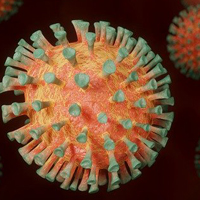Increased food contamination with mold and fungi during COVID-19 crisis

Accepted: October 7, 2021
All claims expressed in this article are solely those of the authors and do not necessarily represent those of their affiliated organizations, or those of the publisher, the editors and the reviewers. Any product that may be evaluated in this article or claim that may be made by its manufacturer is not guaranteed or endorsed by the publisher.
Authors
COVID-19, known as the “novel coronavirus disease 2019”, is a respiratory illness, and the causative pathogen is officially named as Sars-CoV-2, whose epidemic has spread rapidly worldwide. Thus, human-to-human transmission has reduced as people’s attention to health has increased and precautionary measures have been implemented. It is known that the virus can survive on infected surfaces and hands for hours or days. It is possible to get infected by touching the contaminated surface of food packaging by customers in the grocery and then touching their own mouth, nose, or eyes. Thus, the public supposes that touching food or food packing by salesmen and buyers in the grocery can transmit the virus to the customers. Therefore, the World Health Organization encourages people to wash their hands regularly and disinfect areas where the virus can survive, such as metal and plastic surfaces. However, overwashing can cause disadvantages such as moisture penetration into food packages and increased water activity in food, which provides the conditions for fungi to grow and cause spoilage in food. Accordingly, this phenomenon would have shown significant negative effects on public health as the post-pandemic phase of COVID- 19. The coronavirus has had a significant impact on people’s behavior in the food chain, washing and disinfecting food in these critical situations. People also quickly changed the way they bought and procured food from supermarkets to ensure food safety and eradicate the virus. Use of substances/disinfectants such as Sodium hypochlorite reduce COVID-19 from surfaces and objects or reduce viral particles from surfaces and objects. Washing and disinfecting food packaging may cause damage to products thereby reducing their shelf life and utilization. Therefore, health experts report public awareness of hands and disinfect surfaces regularly to eliminate the virus. It is also recommended to wash and disinfect hands and disinfect surfaces.
How to Cite
PAGEPress has chosen to apply the Creative Commons Attribution NonCommercial 4.0 International License (CC BY-NC 4.0) to all manuscripts to be published.

 https://doi.org/10.4081/jbr.2021.9874
https://doi.org/10.4081/jbr.2021.9874



